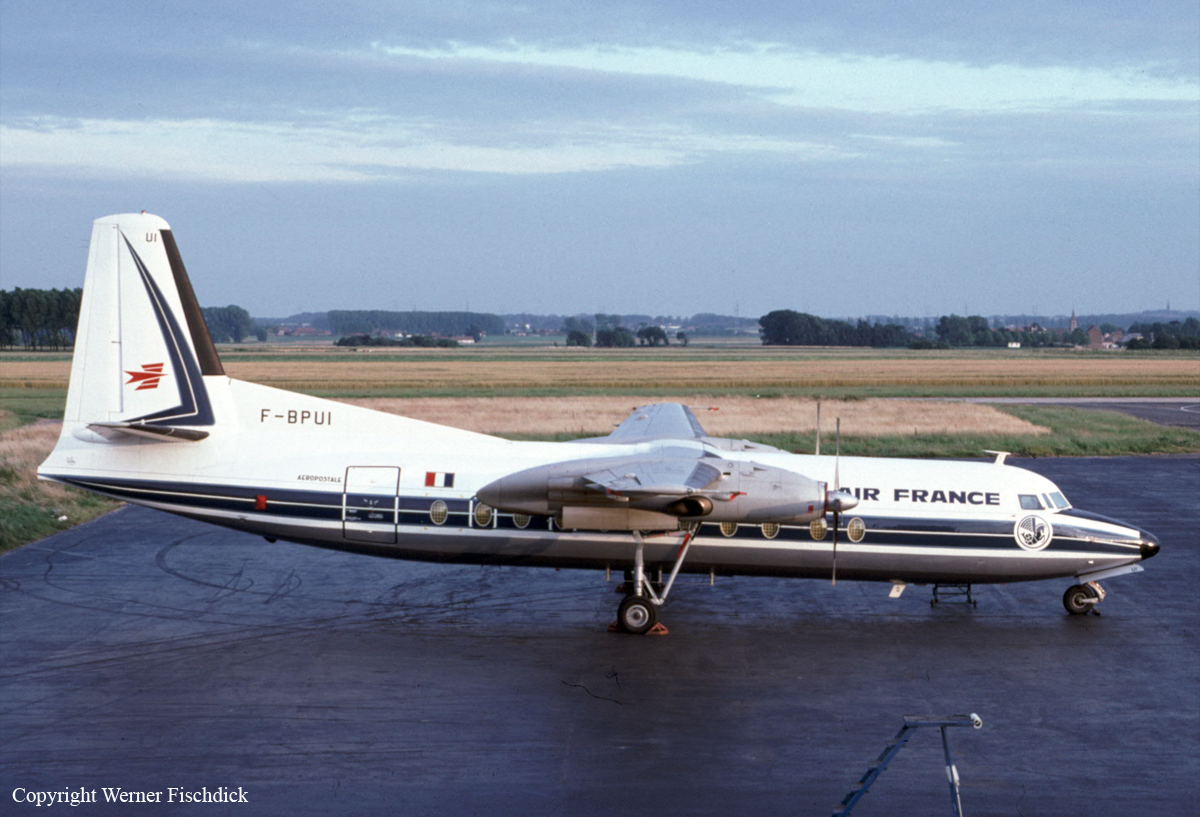Country
code
Loire-Atlantique
Crash of a Beechcraft C90 King Air in Nantes
Date & Time:
Dec 27, 1992
Registration:
F-GIBR
Survivors:
Yes
Schedule:
Nantes - Limoges
MSN:
LJ-734
YOM:
1977
Crew on board:
1
Crew fatalities:
Pax on board:
1
Pax fatalities:
Other fatalities:
Total fatalities:
0
Circumstances:
The twin engine aircraft was engaged in an ambulance flight from Nantes to Limoges, carrying one pilot and one doctor who should embark a patient in Limoges. During the takeoff roll, just before V1 speed, the nose gear collapsed. The aircraft slid on its nose for few dozen metres before coming to rest on the runway. Both occupants escaped uninjured and the aircraft was damaged beyond repair.
Crash of a Cessna 404 Titan II in Nantes
Date & Time:
Jan 29, 1980
Registration:
PH-JAL
Survivors:
Yes
MSN:
404-0218
YOM:
1978
Crew on board:
2
Crew fatalities:
Pax on board:
6
Pax fatalities:
Other fatalities:
Total fatalities:
0
Circumstances:
On final approach to Nantes-Château Bougon Airport, the twin engine airplane crashed in a cemetery located about 2 km short of runway 03, in Saint-Aignan-de-Grand-Lieu. All eight occupants were rescued while the aircraft was damaged beyond repair.
Crash of a Beechcraft 200 Super King Air near Nantes: 2 killed
Date & Time:
Sep 25, 1979 at 2220 LT
Registration:
G-BGHR
Survivors:
No
Schedule:
Stansted - Exeter
MSN:
BB-508
YOM:
1979
Crew on board:
2
Crew fatalities:
Pax on board:
0
Pax fatalities:
Other fatalities:
Total fatalities:
2
Copilot / Total hours on type:
7
Aircraft flight hours:
47
Circumstances:
After a flight from Leavesden to Stansted, the instructor had filed an IFR flight plan for Stansted - Exeter, at FL310, the planned departure from Stansted being at 1400. Take-off from Stansted was at 1303, and during the following 40 minutes the aircraft flew locally in the Stansted zone where it conducted two ILS approaches followed by an overshoot. At 1345 it was authorised to change from the Stansted frequency and contact the London Centre. The climb to FL310 was normal. At 1421 hrs the pilot asked ATC whether it would be possible to perform an emergency descent exercise before reaching Exeter, his intention being to begin the descent after passing Dawlish. The controller agreed and asked the pilot to call back when he was ready to begin the manoeuvre. At 1435 the Beech was almost over Dawlish and the crew announced they were ready to begin the exercise. They stated that they would keep a listening watch on the frequency during the descent, but would not be able to transmit while they were donning their masks. At 1436, the flight was authorised to begin the descent, initially to FL120. At 1438 the controller gave the Beech a right-hand turn heading for Exeter. At 1439 he repeated the heading. At 1443, noting that the aircraft had commenced a turn to the left, he authorised it to turn left to head for Exeter. At 1444 he asked for the pilot to give an identifying 'squawk' on the transponder. He did not receive a reply to any of these communications. Since 1438 Beech G-BGHR had been describing large circles to the left at FL310. The wind at that altitude made the aircraft drift towards the south, and it was to pass successively over Guernsey, Jersey, Dinard and Rennes. At the end of its endurance at 2020 (2220LT) the aircraft crashed near Nantes, 20 km to the east/southeast of the town. A RAF Nimrod escorted the Beechcraft during its progress to the vicinity of Nantes. G-BGHR was also followed by two Dassault Mirage III and three Mirage F1 of the French Air Force from 1810 until 2010. The pilots of these aircrafts checked the external condition of the Beech, which appeared normal, the doors and emergency exits were in their normal position, the cabin and cockpit were illuminated and the navigation lights were operating. However, they were unable to make any contact but they all noted the presence of warning lights on the control panel.
Probable cause:
The immediate cause of the accident was the aircraft striking the ground at a steep angle. The cause of the accident was depressurization of the cabin at high altitude by the pilot. This exercise is too dangerous to be carried out on an aircraft in this class, in view of the useful consciousness time available to the pilots in the case of any failure of the oxygen circuit. In this particular case, the oxygen masks were not connected and the crew died in flight due to hypoxia.
Final Report:
Crash of a Beechcraft 99 Airliner in Nantes: 8 killed
Date & Time:
Jul 2, 1975
Registration:
F-BTQE
Survivors:
No
Schedule:
Nantes - Brest
MSN:
U-61
YOM:
1969
Crew on board:
2
Crew fatalities:
Pax on board:
6
Pax fatalities:
Other fatalities:
Total fatalities:
8
Circumstances:
Shortly after takeoff from Nantes-Château Bougon Airport, while climbing, the captain informed ATC about the failure of the right engine that caught fire. The crew was cleared to return for an emergency landing when the airplane stalled and crashed in flames onto a railway track located near the airport. The aircraft was totally destroyed and all eight occupants have been killed.
Probable cause:
Failure of the right engine for undetermined reason.
Crash of a Fokker F27 Friendship 500 in Nantes: 3 killed
Date & Time:
Jul 24, 1974 at 2145 LT
Registration:
F-BPUI
Survivors:
No
Schedule:
Rennes - Nantes - Poitiers - Clermont-Ferrand
MSN:
10389
YOM:
1969
Crew on board:
3
Crew fatalities:
Pax on board:
0
Pax fatalities:
Other fatalities:
Total fatalities:
3
Aircraft flight hours:
14208
Aircraft flight cycles:
17677
Circumstances:
The crew was completing a mail flight from Rennes to Clermont-Ferrand with intermediate stops in Nantes and Poitiers on behalf of the French Postal Service (La Poste). On final approach to Nantes-Château Bougon Airport by night, the crew failed to realize his altitude was too low when the airplane struck power cables and crashed in flames in a field located about 12 km from the airport. The aircraft was destroyed and all three crew members were killed.
Probable cause:
The accident was the consequence of the combination of the following factors:
- Poor crew coordination,
- The crew failed to follow the published approach procedures,
- Lack of visibility,
- High obstructions.
- Poor crew coordination,
- The crew failed to follow the published approach procedures,
- Lack of visibility,
- High obstructions.




